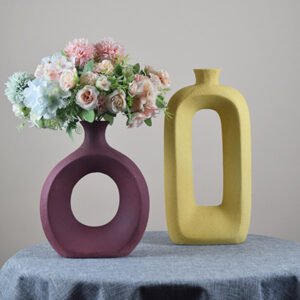A lot of the time people are puzzled by the usage of these terms and their differences. the fact is they are all types of traditional ceramics. They are all made using basic material clay. There are other subcategories of ceramics besides these three, so read on.
The differences arise when different clay compositions are used at different firing temperatures and the resultant porosity after firing. Remember raw clay materials if not fired will simply dissolve in water.
Porcelain is similar to bone china but is less translucent since it does not contain bone ash and as a result of it is also less expensive than bone china. It is ideal for use in the microwave and conventional oven. The water absorption rate is 0 to 1%.
Earthenware(dolomite) is the cheapest form among all types of ceramic. Since it is fired at low temperatures the water absorption is high and thus is not as strong as the other varieties. However beautiful paintings can be easily done on them as a result of their absorbing power. It is hand-decorated and glazed if to be used for food. Ironstone and dolomite are two quality variations in earthenware.
Stoneware is the strongest of the lot. As it has a higher percentage of china stone than earthenware it is non-porous. It can be easily used in microwaves and is less expensive than bone china and porcelain.
All types of ceramic have a unique character and are used for various purposes. Beautiful and exquisite table sculpture is made from the above material, stoneware pitcher is a common item available at various prices.



